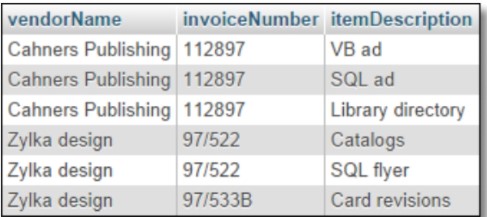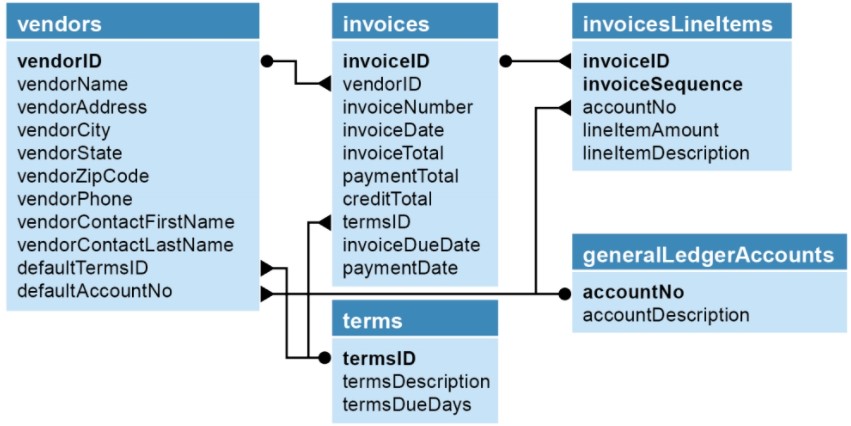How normalization works
A table that contains repeating columns
A table that contains redundant data
The accounts payable system in third normal form
Description
- Normalization is a formal process that you can use to separate the data in a data structure into related tables. Normalization reduces data redundancy, which can cause storage and maintenance problems.
- In an unnormalized data structure, a table can contain information about two or more entities. It can also contain repeating columns, columns that contain repeating values, and data that’s repeated in two or more rows.
- In a normalized data structure, each table contains information about a single entity, and each piece of information is stored in exactly one place.
- To normalize a data structure, you apply the normal forms in sequence. Although there are a total of seven normal forms, a data structure is typically considered normalized if the first three normal forms are applied.
Back



